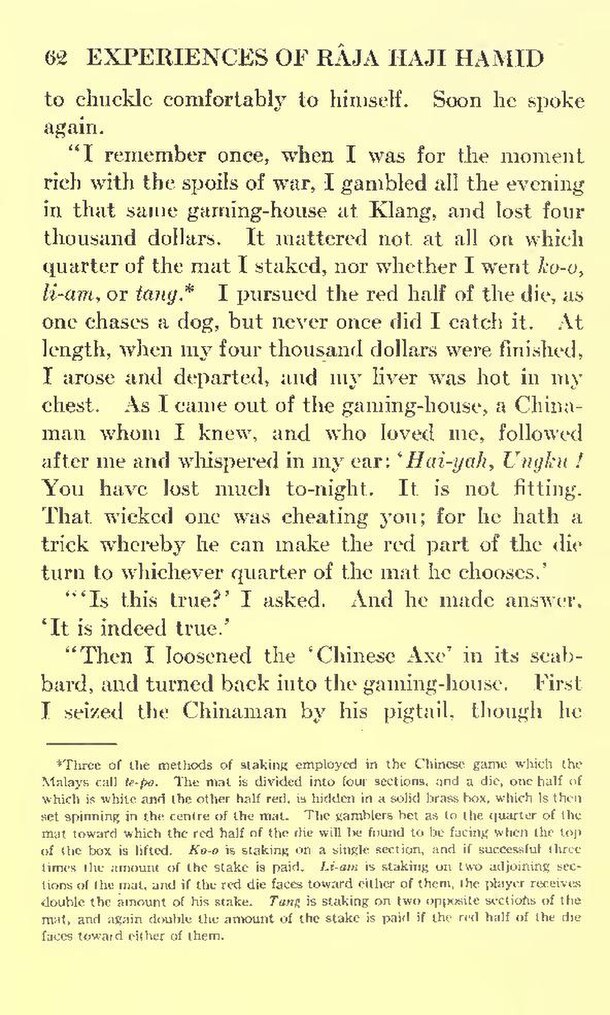to chuckle comfortably to himself. Soon he spoke again.
"I remember once, when I was for the moment rich with the spoils of war, I gambled all the evening in that same gaming-house at Klang, and lost four thousand dollars. It mattered not at all on which quarter of the mat I staked, nor whether I went ko-o, li-am, or tang.[1] I pursued the red half of the die, as one chases a dog, but never once did I catch it. At length, when my four thousand dollars were finished, I arose and departed, and my liver was hot in my chest. As I came out of the gaming-house, a Chinaman whom I knew, and who loved me, followed after me and whispered in my ear: 'Hai-yah, Ungku! You have lost much to-night. It is not fitting. That wicked one was cheating you; for he hath a trick whereby he can make the red part of the die turn to whichever quarter of the mat he chooses."
"'Is this true?" I asked. And he made answer. 'It is indeed true.'
"Then I loosened the 'Chinese Axe' in its scabbard, and turned back into the gaming-house. First I seized the Chinaman by his pigtail, though he
- ↑ Three of the methods of staking employed in the Chinese game which the Malays call te-po. The mat is divided into four sections, and a die, one half of which is white and the other half red, is hidden in a solid brass box, which is then set spinning in the centre of the mat. The gamblers het as to the quarter of the mat toward which the red half of the die will be found to be facing when the top of the box is lifted. Ko-o is staking on a single section, and if successful three times the amount of the stake is paid. Li-am is staking on two adjoining sections of the mat, and if the red die faces toward either of them, the player receives double the amount of his stake. Tang is staking on two opposite sections of the mat, and again double the amount of the stake is paid if the red half of the die faces toward either of them.
